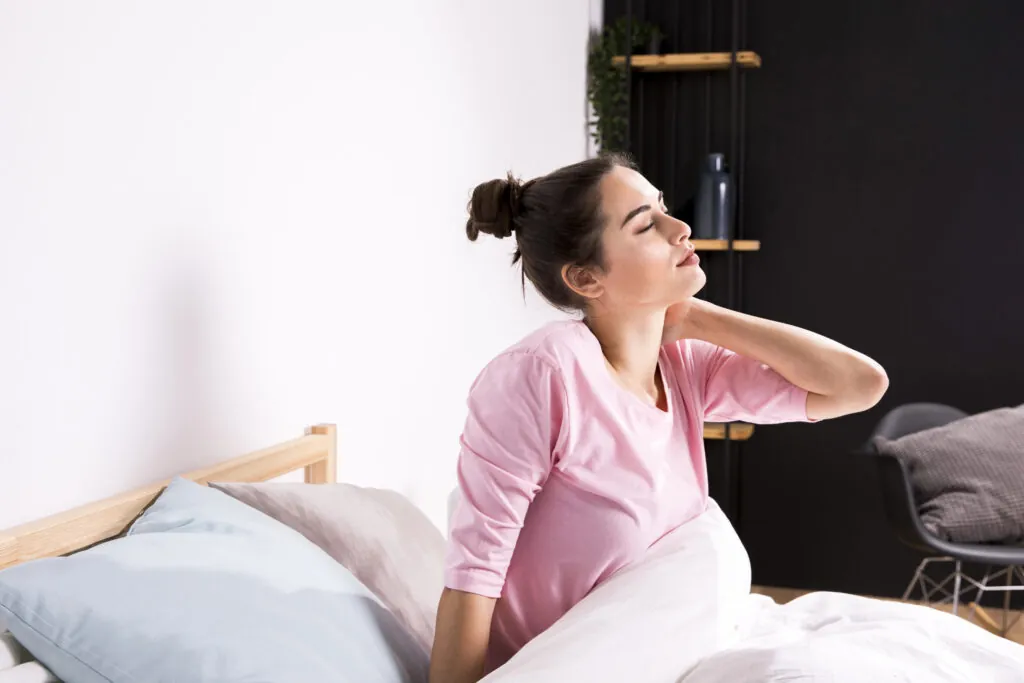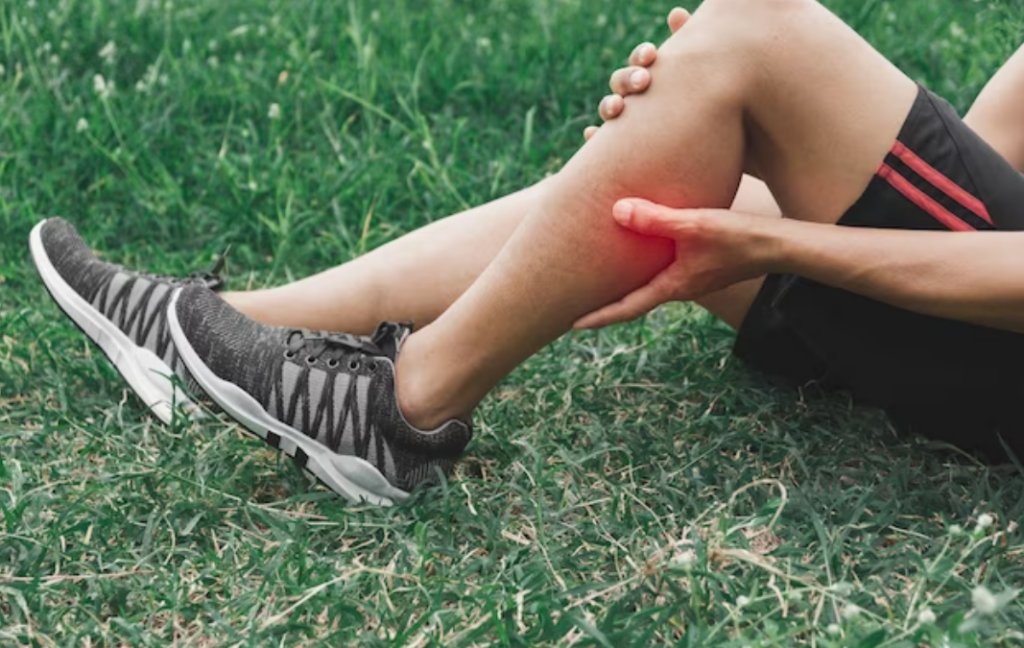If you're struggling with lower back pain in Fort Worth, you're not alone, and there are effective strategies to help you manage it. Incorporating simple habits into your daily routine can make a significant difference. From adjustments in your posture to choosing the right mattress, the solutions can be surprisingly straightforward. However, understanding which tips will work best for your unique situation is essential. Let's explore these practical strategies that could lead you toward relief and better back health.
Practice Regular Stretching
Incorporating regular stretching into your routine can considerably alleviate lower back pain. When you stretch, you not only enhance flexibility but also improve blood flow to your muscles, promoting healing and reducing tension.
It's vital to target the muscles surrounding your lower back, such as the hamstrings, hip flexors, and glutes. Tightness in these areas can contribute to discomfort and tightness in your back.
Start with gentle stretches that you can easily integrate into your day. For instance, try the cat-cow stretch: get on all fours, arch your back upwards, then lower it while lifting your head. This movement encourages mobility in your spine.
You can also perform seated forward bends. Sit with your legs extended, bend forward, and reach for your toes. Hold the stretch for 15-30 seconds, breathing deeply to deepen the stretch and release tension.
It's imperative to listen to your body while stretching. If you feel sharp pain, ease off. Consistency is key, so aim to stretch daily, or at least several times a week. You can even set reminders on your phone to guarantee you don't forget.
Over time, you'll likely notice a decrease in your lower back pain and an increase in your overall flexibility and comfort. By making stretching a habit, you're actively taking steps toward a more pain-free lifestyle.
Maintain Good Posture
Good posture plays an essential role in preventing and alleviating lower back pain. When you sit, stand, or move with good alignment, you reduce the strain on your spine and surrounding muscles.
Start by adjusting your workspace. If you work at a desk, make sure your chair supports your lower back. Your feet should rest flat on the floor, with knees at a 90-degree angle. If your chair doesn't provide support, consider using a small cushion or lumbar roll.
When standing, distribute your weight evenly on both feet. Keep your shoulders back and relaxed, and avoid locking your knees. If you need to stand for long periods, try shifting your weight from one foot to the other or using a footrest to relieve pressure on your lower back.
While walking, maintain an upright posture. Keep your head up, shoulders back, and engage your core muscles. This will help support your spine and improve your overall stability.
If you find yourself slouching, remind yourself to reset your posture periodically throughout the day.
Lastly, be mindful of your posture when lifting heavy objects. Bend at your knees, not your waist, and keep the object close to your body. This technique minimizes strain on your lower back and helps prevent injury.
Invest in a Supportive Mattress
When it comes to your mattress, choosing the right firmness level can make a big difference in your comfort and support.
You'll also want to contemplate the materials used, as they can impact your sleep quality.
Remember to replace your mattress every 7-10 years to keep your back feeling its best.
Choose Firmness Level Wisely
Choosing the right mattress can make a significant difference in managing lower back pain. When you're shopping for a new mattress, the firmness level is vital. A mattress that's too soft can cause your spine to sink, leading to misalignment, while one that's too firm may put excessive pressure on your joints.
To find the ideal firmness, consider your sleeping position. If you're a side sleeper, a medium-soft mattress can cushion your shoulders and hips, promoting better spinal alignment. Back sleepers typically benefit from a medium-firm mattress, which offers support without compromising comfort. If you sleep on your stomach, a firmer mattress can help keep your spine straight and prevent lower back strain.
Don't forget to test the mattress before you buy it. Lie down in your usual sleep position for at least 10 minutes. Pay attention to any discomfort or pressure points.
Consider Mattress Materials
The materials used in a mattress can greatly impact your comfort and support, especially for lower back pain. When choosing a mattress, consider options like memory foam, latex, or hybrid models that combine various materials. Each type offers different benefits.
For instance, memory foam contours to your body, providing excellent pressure relief, which can help alleviate pain.
Latex mattresses are known for their durability and responsiveness, offering a firmer feel without sacrificing comfort. If you prefer a balance, a hybrid mattress may give you the best of both worlds, combining the support of innerspring coils with the comfort of foam or latex.
Also, pay attention to the mattress's density and thickness. A denser mattress generally provides better support and longevity.
Look for a thickness that suits your sleeping position; side sleepers might benefit from thicker options, while back sleepers may find a medium thickness supportive enough.
Ultimately, investing in a quality mattress made from supportive materials can greatly improve your sleep quality.
Don't underestimate the importance of a good mattress; it's an essential step in managing lower back pain effectively.
Replace Every 7-10 Years
A supportive mattress can greatly impact your lower back health, but it won't last forever. Most mattresses have a lifespan of about 7-10 years, depending on the materials and usage. If you've been waking up with stiffness or pain, it might be time to evaluate replacing your mattress.
Over time, even the best mattresses lose their shape and support. Sagging or uneven surfaces can lead to poor spinal alignment, exacerbating lower back pain.
When you invest in a new mattress, look for one that offers proper support for your sleeping position. Whether you sleep on your back, side, or stomach, the right mattress can help maintain your spine's natural curve.
Don't wait until your mattress is visibly worn out. If you notice discomfort after a night's sleep or if you can feel the springs when lying down, it's a sign that you need an upgrade.
Prioritize your back health by choosing a mattress that fits your needs. Remember, a good night's sleep is essential for recovery and overall well-being, so don't hesitate to replace your mattress every 7-10 years for ideal support. Your back will thank you!
Engage in Low-Impact Exercise
Engaging in low-impact exercise can be a game-changer for managing lower back pain. These activities help strengthen your core muscles, improve flexibility, and enhance blood circulation, all of which contribute to better spinal support and reduced discomfort.
Consider incorporating exercises like swimming, walking, or cycling into your routine. These activities are gentle on your joints while still providing a solid workout.
When you start, aim for at least 30 minutes of low-impact exercise on most days. If you're new to exercise or have been inactive, begin with shorter sessions and gradually increase the duration.
Listen to your body; if something feels painful, stop and adjust your activity. Remember, the goal is to keep moving without exacerbating your pain.
In addition to aerobic activities, consider integrating strength training and flexibility exercises. Gentle yoga or Pilates can be particularly beneficial, as they focus on core strength and stretching, helping to relieve tension in your back.
Balance is key; make certain you're incorporating exercises that target different muscle groups while also allowing for adequate recovery time.
Lastly, don't forget to consult with a healthcare provider before starting any new exercise regimen. They can help tailor a program that fits your specific needs and conditions.
Use Heat and Cold Therapy
How can heat and cold therapy relieve lower back pain effectively? This approach is simple yet powerful. Both heat and cold can address pain in different ways, helping you find relief and improve your daily comfort.
When you use heat therapy, you're increasing blood flow to the affected area. This helps relax muscles and eases stiffness. You can apply a heating pad, warm towel, or take a warm bath. Just make sure the temperature isn't too hot, as you want to avoid burns. Aim for about 15-20 minutes of heat application, allowing your muscles to loosen up and promote healing.
On the other hand, cold therapy can reduce inflammation and numb sharp pain. If you've recently injured your back or are experiencing swelling, applying ice packs can be very effective. Wrap ice in a cloth or use a cold pack, applying it for 15-20 minutes at a time. Avoid direct contact with your skin to prevent frostbite, and give your skin some time to warm back up before reapplying.
Combining both therapies can yield the best results. Start with cold therapy to minimize inflammation, then switch to heat to promote healing.
Pay attention to how your body responds, and adjust accordingly. By incorporating heat and cold therapy into your routine, you can alleviate lower back pain and enhance your overall well-being.
Stay Hydrated
Staying hydrated plays a significant role in managing lower back pain. When your body lacks sufficient water, it can lead to muscle stiffness and decreased spinal disc health, both of which contribute to discomfort in your lower back. By drinking enough water throughout the day, you can help maintain the elasticity of your muscles and the cushioning of your spinal discs.
Aim for at least eight 8-ounce glasses of water daily, or more if you're active or live in a hot climate. It's crucial to listen to your body; if you feel thirsty, it's a sign you need to hydrate. Dehydration can cause your muscles to tighten, leading to increased tension in your back. Keeping your muscles well-hydrated helps them function effectively and reduces the risk of strain or injury.
You might also consider incorporating foods with high water content into your diet, like fruits and vegetables. Foods like cucumbers, watermelon, and oranges not only boost hydration but also provide essential nutrients that support overall health.
If you're engaging in physical activity, remember to replenish your fluids before, during, and after your workout. This won't only help your back but also enhance your overall performance and recovery.
Consider Physical Therapy
When dealing with lower back pain, considering physical therapy can be a game changer. Physical therapists are trained to assess your specific condition and develop a tailored plan that targets your unique needs. They can help you understand the root cause of your pain and guide you through exercises designed to alleviate discomfort.
In a typical session, you'll engage in a variety of treatments, including stretching, strengthening exercises, and manual therapy techniques. These activities not only help relieve pain but also improve your overall mobility and flexibility. You'll learn how to perform these exercises correctly, which is crucial for avoiding further injury.
One of the biggest benefits of physical therapy is that it empowers you to take control of your recovery. Instead of relying solely on medication or invasive procedures, you'll gain tools to manage your pain effectively. Your therapist will teach you proper body mechanics, helping you understand how to lift, bend, and sit without straining your back.
Additionally, physical therapy can offer insights into lifestyle changes that support your recovery. You may discover new ways to engage in daily activities without exacerbating your pain.
If you're skeptical, remember that many patients report significant improvements in their pain levels and overall quality of life after completing a physical therapy program.
Incorporate Core Strengthening
A strong core is essential for alleviating lower back pain and preventing future injuries. When you focus on strengthening your core muscles, you provide stability to your spine and support to your lower back. This means you'll be less likely to experience pain and discomfort during daily activities.
To start incorporating core strengthening exercises into your routine, consider simple movements like planks, bridges, and pelvic tilts. These exercises target the abdominal muscles, obliques, and lower back, helping to create a well-rounded core. You don't need fancy equipment; just your body weight can be enough. Aim for a minimum of two to three sessions per week, gradually increasing the intensity as your strength improves.
Another effective exercise is the bird-dog. This move engages both your core and lower back while improving balance. To perform it, get on all fours, extend one arm forward and the opposite leg back, hold for a moment, and then switch sides. It's a great way to enhance coordination and stability.
Don't forget to focus on your breathing during these exercises. Deep, controlled breaths can help you engage your core more effectively and enhance your overall performance.
As you strengthen your core, you'll likely notice improvements not just in your back pain, but in your overall mobility and strength. Remember, consistency is key, so make core strengthening a regular part of your fitness routine for the best results.
Avoid Prolonged Sitting
To keep your lower back healthy, it's essential to avoid sitting for long periods.
Stand and stretch frequently, and consider using ergonomic seating options or incorporating standing desks into your workspace.
These small changes can make a big difference in how your back feels.
Stand and Stretch Frequently
Prolonged sitting can be a silent contributor to lower back pain, making it essential to stand and stretch frequently.
You mightn't realize it, but staying seated for long periods can tighten your muscles and strain your back. To combat this, set a timer to remind yourself to get up and move.
Here are some simple stretches you can do throughout the day:
- Forward Bend: Stand up, reach for your toes, and let your head hang. Hold for 15-30 seconds to release tension in your lower back.
- Torso Twist: While standing, gently twist your torso to the right and then to the left. This helps improve spinal mobility.
- Hip Flexor Stretch: Step one foot back and bend your front knee. Keep your back leg straight to stretch the hip flexors, which can impact your lower back.
- Side Stretch: Reach one arm overhead and lean to the opposite side. Hold for a few seconds and switch sides to stretch your obliques.
Incorporating these stretches into your routine can greatly alleviate discomfort and enhance your overall well-being.
Use Ergonomic Seating Options
Sitting for long stretches can lead to discomfort, but choosing the right seating can make a significant difference in your lower back health. Ergonomic chairs are designed to support your spine's natural curves, helping to reduce strain on your lower back.
When selecting a chair, look for adjustable features like seat height, lumbar support, and armrests. This way, you can customize the fit to suit your body.
Make sure your feet are flat on the floor, and your knees are at or below hip level. If your chair is too high, think about using a footrest. Also, keep your back against the chair to maintain proper posture.
It's essential to take breaks every hour to stand, stretch, or walk around to avoid stiffness.
If you spend a lot of time at a desk, you might also want to reflect on adding lumbar cushions or seat pads. These can provide extra support and comfort, helping you stay focused without distracting pain.
Incorporate Standing Desks
Incorporating standing desks into your workspace can greatly reduce the risks associated with prolonged sitting. When you stand more while working, you'll not only improve your posture but also engage your muscles, which can alleviate lower back pain.
Here are some tips to make the most of your standing desk:
- Alternate Between Sitting and Standing: Change your position every 30 to 60 minutes to avoid fatigue and keep your body engaged.
- Use an Anti-Fatigue Mat: Invest in a comfortable mat to stand on. It provides cushioning and support, reducing discomfort during long periods of standing.
- Keep Your Screen at Eye Level: Position your monitor so that the top of the screen is at or just below eye level. This helps in maintaining good neck and spine alignment.
- Wear Supportive Shoes: Choose footwear that offers good arch support. Avoid high heels or flip-flops, as they can strain your back and feet.
Seek Professional Advice
When dealing with lower back pain, seeking professional advice is essential for effective recovery. You shouldn't ignore the discomfort or hope it'll resolve on its own. A healthcare professional can assess your condition, identify the underlying cause, and recommend appropriate treatment options tailored to your needs.
Start by scheduling an appointment with your primary care physician. They'll conduct a thorough evaluation, which may include physical examinations, medical history reviews, or imaging tests like X-rays or MRIs. This step helps pinpoint the exact nature of your pain, whether it's due to muscle strain, herniated discs, or another issue.
Once you receive a diagnosis, your doctor may refer you to specialists, such as a physical therapist, chiropractor, or pain management expert. Each of these professionals brings unique skills to the table. For instance, a physical therapist can develop a customized exercise program to strengthen your back and improve flexibility, while a chiropractor can help realign your spine.
Don't hesitate to ask questions during your visits. Understanding your condition and treatment options empowers you to make informed decisions.
Also, consider discussing any medications or alternative therapies, like acupuncture or massage, that might alleviate your pain.
Conclusion
By incorporating these tips into your daily routine, you can effectively alleviate lower back pain and improve your overall well-being. Remember to practice regular stretching, maintain good posture, and engage in low-impact exercises. Don't forget the importance of heat and cold therapy, as well as seeking professional advice when needed. With a little effort and the right approach, you can take charge of your back health and enjoy a more comfortable life in Fort Worth.



